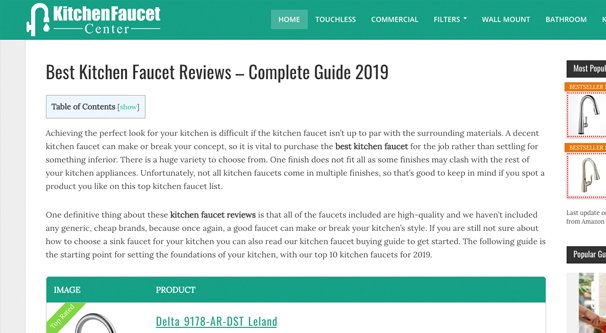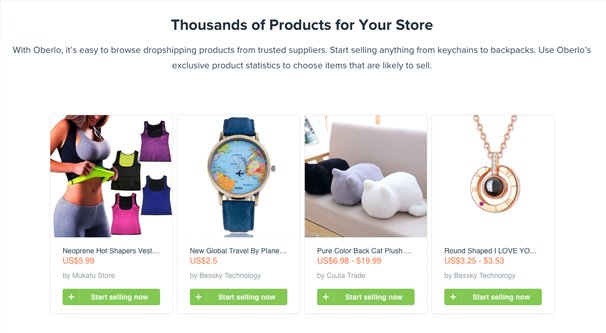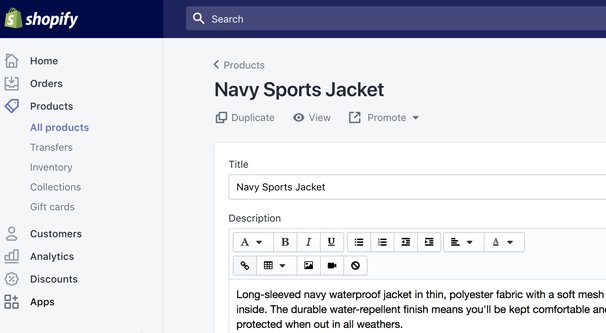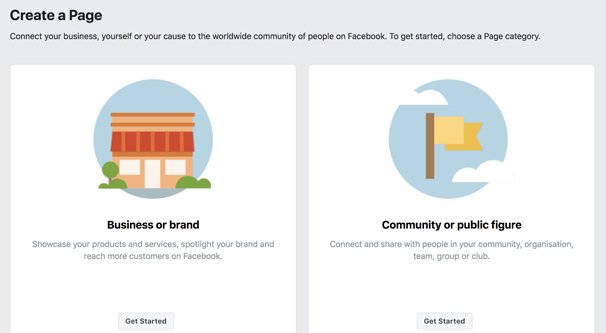How to Start a Dropshipping Business Using Facebook Ads

Dropshipping is a great form of business for someone who wants to dip their toes into online marketing, but doesn’t want to deal with product inventories and storage space. Since you’re not handling the products yourself, you save a lot of the hassle of running a product-focused business. At the same time, since you’re referring actual sales rather than affiliate commissions, you have more control over the ways you advertise, the prices you set, and the techniques you use.
It’s possible to run a dropshipping business with Facebook Ads, but you need more than just a Facebook account. Let’s start from the ground up and talk about how you can go from nothing to your first sale.
How Dropshipping Works
Before you can get into running a dropshipping business, you need to learn how the whole thing works. If you’re not already familiar with the practice, read on. If you are, go ahead and skip to the next section.
With dropshipping, you basically become a middleman. You find companies that have products to sell and make a deal, paying for their products at a wholesale rate. You then set a higher price and sell the product to customers. You’re doing the legwork of marketing and selling, and you set a price point where you can profit from the deal.
When a customer buys a product through you, you refer the sale directly to the wholesaler, who packages and ships the product directly to the customer. You don’t have to deal with the order fulfillment part of the process, and you never have to hold inventory. Since you can set the price point, you can sell for as much profit as you can squeeze out of the niche.
It’s basically like being half of a business. You don’t have to deal with manufacturing or shipping, just with marketing and sales. It’s a great way to get some experience before you move on to running a store with inventory you manage, if you choose to expand in that direction.
Dropshipping is also great because it’s relatively low risk. You spend the money on a website and advertising, but you don’t have to spent a lot. If you don’t sell anything, you’re not left holding the bag with a spare room full of inventory or the like.
Convinced? Here’s how you can go about starting a dropshipping store from scratch.
Choose a Niche
The first thing you have to do is come up with a business idea. What do you want to sell? There are two schools of thought here.
One is the trend chaser. These people monitor lists of trending products and try to keep on top of trends, changing out their inventory as trends come and go. You might choose an overarching niche like “sports”, but the exact selection of products you sell changes from time to time.
This option can be a great way to capture a constant surge of trending traffic, but it’s also more upkeep to constantly monitor trends and shift your products. At the same time, you tend to sacrifice returning customers who might want another of a product you sold them, only to find you no longer offer it because the trend has passed.
The other option is the slow and steady brand builder. These people pick a broad niche like “sports” but don’t worry so much about trends. They build a stable store with a solid selection of products, and focus on the marketing end to build up their brand.
This is a good option for building a consistent and recognizable brand, and for gaining repeat, loyal customers. On the other hand, it has a lower amount of initial profit and growth potential, since you’re not constantly riding a wave. Over the course of years, you may build a userbase up to a point where you’re more profitable than the trend chasers, but it takes time to reach that point.
When you’re considering a niche to pick, think about the repercussions of selling that product. For example:
- Selling food items means you have to consider quality control and sourcing food from good sources.
- Selling electronics means you have to rotate products as new versions show up, and you may have a high return rate as items break.
- Selling appliances will have a low sales rate because they’re rare purchases for most people, and the shipping costs are extreme.
- Selling low-cost items can have large profit margins in volume, but individually don’t add up to much.
You want to look into competition for your chosen niche as well. You won’t find a niche with zero competition, ever. There are simply too many marketers out there selling too many things. Plus, a niche with no competition means no one has been able to profitably sell in that niche, which isn’t a good sign for your chances.
Find Products to Dropship
Once you have a niche in mind, it’s time to come up with the specific products you want to sell. You can do research in a variety of ways, from Google searches to Amazon product searches to eBay listings. This article goes through a case study of how one marketer picked up a handful of different items to fit a couple of new dropshipping businesses he wanted to run.
The choices you make here will be pretty individualized for you and the goal you have with your dropshipping business. Take your time, identify as many products as you think you can sustainably market, and write it all down.
When you have some product ideas, head over to social networks like Instagram, Facebook, and Twitter and search for them. Look at the kinds of people who are talking about those products, and the discussion they’re having. This can give you insight into the people you’ll be targeting later, when you run ads.
Once you have product ideas, you need to find suppliers. Suppliers tend to be pretty bad at self-promotion, which is why they’re letting dropshippers and retailers do it for them. Unfortunately, this means you’re going to run into fake suppliers. Suppliers who charge fees, sell directly to the public, or who have large order sizes are all unlikely to be good suppliers. I recommend this article for tips on how to find suppliers.
It’s also worthwhile to make a test order for each of the products you want to sell. This allows you to go through the entire shipping and fulfillment process, so you know if there are strange delays, janky messaging, or anything else that could put a damper on your sales.
Set Up a Website
Now you need to come up with your brand. This is really hard! Coming up with a unique brand name that has an available web domain can be extremely difficult. You need something you can brand, so some random jumble of letters won’t work. You need something memorable, especially if you’re trying to build a lasting audience. There are a lot of different ways to generate ideas, so keep trying until you find something. Once you do, don’t forget to commission a logo. Logos are a huge part of what sets apart a good brand from a novice. Plus, they don’t cost much to buy from a site like Fiverr or Upwork.
Register your domain name and some web hosting. You want to set up a storefront at minimum, and I recommend Shopify. Shopify is easy to set up for dropshipping, it has a ton of themes you can use to customize it, and it lets you run a store with minimal tinkering with infrastructure. You may also want to use a third party system like Oberlo – who I’ve linked to a couple of times already for references – to find and link up products very quickly.
Shopify sites have a built-in blog you can use, though it’s not as robust as other kinds of sites like WordPress. If you want to go with WordPress, you can use a Shopify plugin to integrate the two.
Populate Your Website
You need to fill your website with two things: content and products. Products are easy: you’ve already done the legwork of identifying the products you want to sell, and making deals with suppliers. Now you just need to create product listings on your storefront for those products. If you’re stumped on how to do that, just head over to Amazon and check out product listings there. They really know how to sell a product, don’t they?
For blog content, you need to publish a handful of posts right away, and then schedule more to be published, typically at minimum once a month. I prefer once a week, and some people publish much more often, but I find that’s most relevant when you have a store up and making a profit. Starting off, you don’t need a high volume.
Your blog content should focus on your niche and your products, particularly in their usage. If you can write repair guides, usage guides, FAQs, and other useful reference material, you’re off to a good start. You can also hire people to write for you, either from a freelancer site like Upwork, a content mill like Writer Access, or from individual freelancers directly.
Normally, I would emphasize that you spend a lot of time and energy on your blog. However, since we’re focused on running our store here with Facebook ads, you don’t necessarily need quite as much focus on content, since content marketing is all about getting organic visitors. It’s still a good idea to publish a good number of blog posts right away, though, for reasons you’ll read in the next sections.
Set Up a Facebook Page
Setting up a Facebook Page is easy. Simply register a new page with your brand name and company information. Populate it with a few posts, and keep it active with one post every day about your niche. It doesn’t need to be a detailed post, it can be anything from news to memes, it just needs to keep your account active. You can use some tricky techniques to make your account look more active and to boost future activity.
It’s a good idea to grow a Facebook page for similar reasons as a blog; it attracts people into your orbit and can help gain organic customers. It also gives you access to a lot of analytics data, which you can use to identify target customers and target your ads.
A Facebook page is required for Facebook ads, and that’s the next step: setting up Facebook ads. Go to the Facebook ads manager and follow the instructions to set up your account.
Start Running Facebook Ads
Once you have your Facebook ads account up and running, you need to run ads. Now, Facebook has a lot of objectives, and you have to start soft before you build up.
Remember that people on Facebook aren’t there to shop, they’re there to socialize. If you’re going at them with “buy my stuff!” ads immediately, they won’t be convinced. You generally need to start small, by running ads for exposure to get your brand name out there. You can then build into ads that attract people to follow your account, and then ads that direct people to your product pages.
There are tons of examples of good Facebook ads out there, so do some reading. Also, make sure to keep your budgets as small as possible when you’re starting out. Until you know your audience and have some experience, you’re all but guaranteed to lose money. Make sure you’re not losing more than you can sustain.
Once you have some experience and have some good ads up and running, you’ll be able to convert your traffic into paying customers. Once that happens, you’re ready to ramp it up. So where do you go from here?
Do all of the above, but more. Write more blog posts. Offer more products. Post more on social media. Run more ads. The more you scale, the bigger your business can become.










